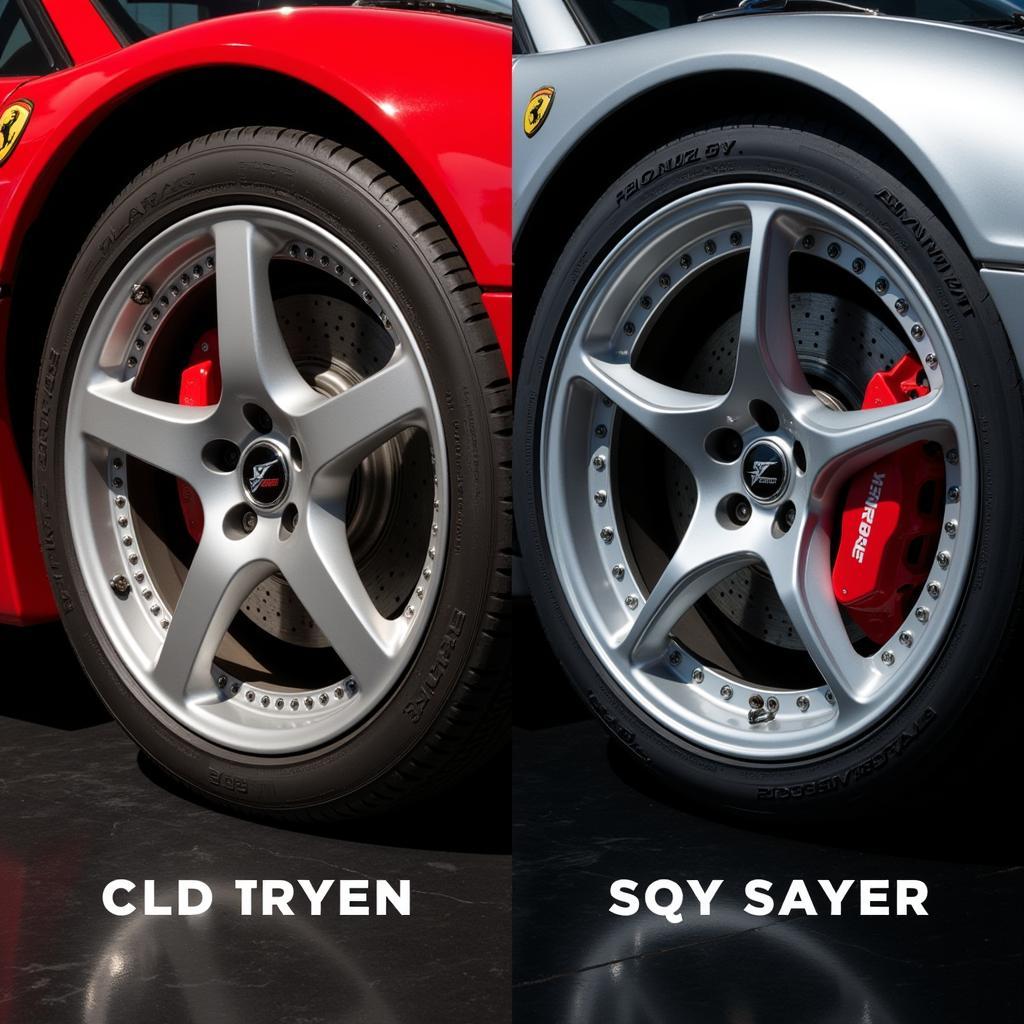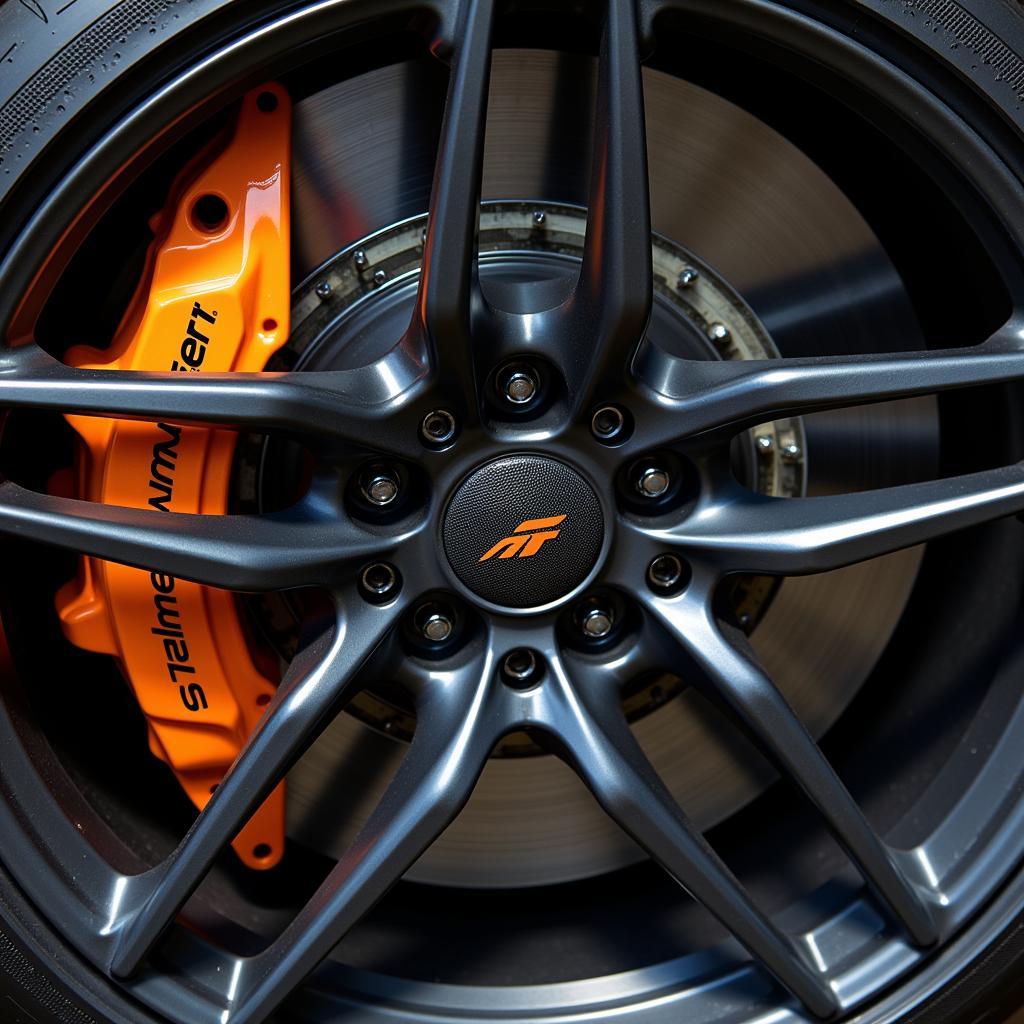McLaren F1 Wheels: A Deep Dive into Engineering and Design
November 8, 2024Mclaren F1 Wheels are more than just circular components that connect the car to the road; they are masterpieces of engineering and design, meticulously crafted to enhance performance, handling, and aesthetics. From material selection to intricate spoke patterns, every detail contributes to the legendary status of the McLaren F1.
The Anatomy of McLaren F1 Wheels
The original McLaren F1 wheels were forged magnesium, known for its lightweight yet robust properties. This choice was crucial for reducing unsprung weight, a key factor in improving responsiveness and handling. The design itself was typically a five-spoke pattern, though variations exist, each carefully engineered to provide optimal strength and minimize weight. The size and offset were also precisely calculated to fit the F1’s unique suspension geometry and maximize grip.
The benefits of lightweight wheels extend beyond handling. They also contribute to improved fuel efficiency and acceleration. By minimizing rotational inertia, less energy is required to get the wheels spinning, translating into quicker acceleration and reduced fuel consumption.
 Close-up of McLaren F1 forged magnesium wheels
Close-up of McLaren F1 forged magnesium wheels
Evolution of McLaren F1 Wheel Design
Over the years, and with the introduction of subsequent McLaren models, wheel design has continued to evolve. While the principles of lightweight construction and performance optimization remain constant, advancements in materials and manufacturing techniques have led to even more sophisticated designs. For example, carbon fiber wheels, renowned for their exceptional strength-to-weight ratio, are increasingly prevalent in high-performance vehicles. While the original F1 didn’t feature carbon fiber wheels, they are a testament to the ongoing pursuit of performance gains.
The aesthetics of McLaren F1 wheels have also seen a transformation. While the classic five-spoke design remains a favorite, modern interpretations incorporate more complex and visually striking patterns. These designs not only enhance the car’s appearance but can also contribute to aerodynamic efficiency.
 Evolution of McLaren F1 wheel design from classic to modern
Evolution of McLaren F1 wheel design from classic to modern
Why are McLaren F1 Wheels so Special?
What sets McLaren F1 wheels apart is the meticulous attention to detail and the relentless pursuit of performance optimization. Every aspect of the wheel, from the material composition to the spoke geometry, is carefully considered and engineered to contribute to the overall performance of the vehicle. This holistic approach is a hallmark of McLaren’s engineering philosophy.
“The wheels are an integral part of the car’s performance,” says Julian Cartwright, a hypothetical automotive engineer specializing in wheel design. “They’re not just an aesthetic element, but a critical component that affects everything from handling to acceleration.”
 Detailed view of McLaren F1 wheel showcasing design and engineering
Detailed view of McLaren F1 wheel showcasing design and engineering
Maintaining and Caring for McLaren F1 Wheels
Proper maintenance is essential for preserving the performance and longevity of McLaren F1 wheels. Regular cleaning with appropriate products is crucial to prevent damage from brake dust and road grime. Periodic inspections for any signs of damage, such as cracks or bends, are also recommended.
“Regular maintenance can significantly extend the lifespan of your wheels,” adds Cartwright. “Catching potential issues early can prevent more serious problems down the road.”
Conclusion
McLaren F1 wheels are a testament to the brand’s commitment to engineering excellence and performance. From their lightweight construction to their intricate designs, these wheels are more than just components; they are integral to the McLaren F1’s legendary status. By understanding the importance of these components and providing proper care, owners can ensure that their McLaren F1 continues to deliver exhilarating performance for years to come.
FAQ
- What material are original McLaren F1 wheels made of? Forged magnesium.
- Why are lightweight wheels important? They improve handling, acceleration, and fuel efficiency.
- How have McLaren F1 wheels evolved over time? Materials, manufacturing techniques, and designs have become more sophisticated.
- What is the typical spoke pattern for McLaren F1 wheels? Five-spoke, although variations exist.
- How should I care for my McLaren F1 wheels? Regular cleaning and inspections are essential.
Common Scenarios and Questions
- Scenario: Noticing a vibration in the steering wheel. Question: Could this be related to a damaged wheel?
- Scenario: Wanting to upgrade to lighter wheels. Question: What are the best options for my McLaren F1?
- Scenario: Preparing for track day. Question: Should I check my wheels for any damage before going on the track?
Further Exploration
- Learn more about McLaren F1 tires and their impact on performance.
- Explore the history of McLaren F1 design and engineering.
For any inquiries or assistance, please contact us: Phone: 0915117113, Email: [email protected], Address: To 3 Kp Binh An, Phu Thuong, Vietnam, Binh Phuoc 830000, Vietnam. We have a 24/7 customer support team.